Munster Rugby
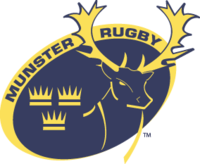 |
|||
| Nickname(s) | The Red Army | ||
|---|---|---|---|
| Founded | 1879 | ||
| Location | Munster, Ireland | ||
| Ground(s) | Thomond Park Musgrave Park (Capacity: 26,500 8,300) |
||
| Coach(es) |
Tony McGahan (Director of Rugby)[1] Jason Holland(Backs) Laurie Fisher (Forwards) Paul McCarthy (Scrum) Shaun Payne (Manager) Mick Galwey (Squad Advisor)[2] Paul Darbyshire (Strength & Conditioning) Anthony Coole (Medical & Physio) |
||
| Captain(s) | Paul O'Connell | ||
| Most appearances | Anthony Foley (201) | ||
| Top scorer | Ronan O'Gara (1,979) | ||
| Most tries | Anthony Horgan (41) | ||
| League(s) | Magners League | ||
| 2009-10 | 4th (Semi-finalist) | ||
|
|||
| Official website | |||
| www.munsterrugby.ie | |||
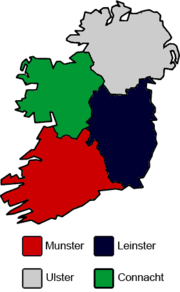
Munster Rugby is an Irish professional rugby union team based in Munster, that competes in the Magners League and Heineken Cup. The team represents the Irish Rugby Football Union Munster Branch which is one of four primary branches of the IRFU, and is responsible for rugby union in the Irish province of Munster. Their main home ground is Thomond Park, Limerick, though some smaller profile games are played at Musgrave Park, Cork. Munster currently play in an all red home strip, while the away jersey is navy. The Munster Rugby logo consists of three crowns and a stag. The team motto is "To the brave and faithful, nothing is impossible"; it is derived from the motto of the MacCarthy clan - "Forti et Fideli nihil difficile".
Munster is known for its passionate support and games involving Munster hold several Heineken Cup records for highest attendances in every stage of the finals, as well as the highest ever attendance for a rugby game in both Spain and Switzerland. In 2008, Director of Coaching Declan Kidney left to take up the head coach job with Ireland, and Munster ensured continuity by promoting Australian Tony McGahan to the position from within the coaching setup.
As of the end of the 2010 season, Munster retain their 1st place on the ERC European Rankings ahead of Toulouse, winners of the 2010 Heineken Cup Final and Leinster[3].
Contents |
History
Munster has a great tradition of competitiveness and impassioned displays against touring sides. The first touring side to play Munster were the famous "Original" All Blacks led by Dave Gallagher, who lined out against Munster in the Markets Field, Limerick in November, 1905. Munster were defeated that day 33-0. Throughout the years Munster were to record a number of near-misses and last minute defeats to the Springboks, Wallabies and the All Blacks. The first tangible result against a touring side was to come in 1958 when the Wallabies were held to a 3–3 draw in Thomond Park.
First victory over a touring side
Munster was the first Irish Provincial side to defeat a major touring team when they defeated Australia 11-8 in Musgrave Park, Cork on 25 January 1967. Munster were captained that day by Tom Kiernan.
Against the All Blacks
Munster drew with New Zealand 3–3 in 1973 and then in 1978 became the only Irish side to have beaten the All Blacks. The 12–0 victory occurred on Tuesday 31 October 1978 at Thomond Park, in front of a crowd of 12,000.[4] Christy Cantillon scored a try with Tony Ward converting. Ward also added a dropped goal in each half. The game remains the only time an All Blacks team lost to any Irish side, and now forms part of Munster rugby mythology. A stage play named Alone it Stands (by John Breen), and a book named Stand Up and Fight: When Munster Beat the All Blacks by Alan English were both based on the events. Both have been commercially successful. Alone it Stands has had several sell-out runs in Ireland and abroad.[5][6] "Stand Up and Fight" was a bestseller in 2005.[7]
The All Blacks returned to Thomond Park in November 2008 — to commemorate the 30th anniversary of the previous match, and to celebrate the opening of the new stadium.[8] After 76 minutes of the match Munster were winning 16-13. However a late try by Joe Rokocoko meant the All Blacks won 18-16.[9]
Early 1990s
In 1992, Australia, reigning world champions, having won the 1991 Rugby World Cup, visited Munster as part of a European Tour. Munster won 22-19 in a rough encounter in Cork. Ten years later, London newspaper The Daily Telegraph recounted part of the legend in a feature on Munster prop Peter Clohessy: "The then Wallabies coach, Bob Dwyer, who was not a man who readily accepted that opposition sides could legitimately score more points than his team, immediately branded the Munster Number 3 a "disgrace". It had been a typically rugged, robust and memorable Munster triumph, with leather and fists flying on both sides. Clohessy who wouldn't generally be known for misconduct was no more guilty than the next man but world champions are not supposed to lose against a hastily assembled Irish provincial XV. There had to be a reason, an excuse, and Dwyer rounded on Clohessy".[10]
Late 1990s and early 2000s
They reached the Heineken Cup quarter-finals in 1998/99, after three years of not being able to get out of the group stages. This led them to their first appearance in the competition's final in 1999/00, where they lost by one point to Northampton at Twickenham. Nevertheless, that season was most memorable with a fantastic win over Toulouse 25-31 in Bordeaux. Their good form and bad luck continued in the following year (2000/01) with a semi-final defeat to Stade Français, again by one point. In 2001/02 Munster lost the last match of their pool in Castres, but qualified as best runners-up. Munster beat Stade Français 16-14 in Paris. The only try of the game coming from Anthony Horgan. It was then on to Béziers to meet Castres for the semi-final. Munster were triumphant and went to the final at Millennium Stadium to meet the reigning champions, Leicester. Munster lost a tight game remembered as 'the hand of Back' final as a Leicester flanker used his hand illegally in a scrum when Munster had a last-chance attack.
In 2002/03, they reached the quarter-finals after a win against Gloucester, later issued on DVD under the title "The Miracle Match". In this game, Munster needed to win by a margin of at least 27 points and score a minimum of four tries to earn a quarter-final berth. They won 33-6 with four tries in a game that has become part of Munster rugby folklore. They again faced Leicester, this time at the Tigers' home of Welford Road, and defeated the reigning champions to progress to the semi-finals. They faced Toulouse in the semi-finals and lost out on a place in the final after losing by a single point in France.
In 2003/04 it was more of the same. After an assured performance in the Pool stage they defeated Stade Français at Thomond Park to set up a semi-final date with English champions Wasps. This was considered one of the best Heineken Cup matches of all time. Although leading by 10 points in the second half, having already lost Ronan O'Gara to injury early on, they succumbed to 2 Wasps tries in injury time resulting in a Wasps v Toulouse final. In 2004/05, after a shaky performance in the Pool stage, they qualified as 5th seeds and played Biarritz away. The match was played at Real Sociedad's ground, the Anoeta Stadium, in San Sebastián in Spain — the first Heineken Cup game ever played in Spain. Biarritz won 19-10 to avenge a 38-29 defeat at the same stage in 2001.
2005-06 to present
In 2005-06, Munster qualified to the final if the Heineken Cup having overcome rivals Leinster 30-6 in the semi final at Lansdowne Road. The final was held at the Millennium Stadium against Biarritz. Munster won 23-19 to become European champions for the first time. The following season, Munster lost their previously unbeaten European record at Thomond Park, losing to Leicester Tigers in the group stages.
The following year, Munster signed Doug Howlett, the all-time leading try scorer for New Zealand. That season's Heineken Cup saw Munster finish top in their group, and they went on to reach the final for the second time in three years beating Saracens in the semi final. The final, again held at the Millennium Stadium, saw Munster defeat Toulouse 16-13 to claim their second Heineken Cup title in 3 years.
In 2009, Munster reaced the semi-final of the Heineken Cup but lost to arch-rivals Leinster in the semi-final by 25-6, attended by a world record crowd of over 82,200. On 30 April 2009 Munster clinched the Magners League for the second time in their history after closest challengers the Ospreys beat the Newport Gwent Dragons but failed to claim a bonus point, this handed the title to Munster who could not be overtaken at the top of the table. [11]
The 2009-10 season saw Munster finish top of their pool once again. Victories over Northampton Saints, French Top 14 champions Perpignan and Italian side Treviso saw Munster qualify for the Heineken Cup Quarter Finals for a record 12th consecutive year. The match took place in Thomond Park where Munster played Northampton Saints for the third time that season running out winners 33-19 and by four tries to one. They lost 18–7 in the semi-finals to Biarritz at the Anoeta.
Munster have been drawn in Pool 3 of the Heineken Cup for the 2010-2011 season alongside Ospreys, London Irish and RC Toulon.
Colours and logo
The 'three crowns' emblem used by Munster alludes to the three constituent historic kingdoms of Munster; Thomond in the north, Desmond in the south, and Ormonde in the east. A revamped logo was introduced for the 2003-04 season which included the addition of a stag with the three crowns.[12] The crest was designed to maintain the three crowns, and the new red stag symbolizes strength and competitiveness.[12] The decision for change was a product of two years of planning of research and design.[12] Elements of navy were also introduced into mainly red Munster jersey. The current kit consists of a red shirt with yellow and white trimming, red shorts and red socks. The kit is made by Adidas, who replaced Canterbury of New Zealand, in a deal covering kit supply for three seasons. The name of Munster's current title sponsors, Toyota appears on their shirt. The words "wear with pride and honesty" appear on the collar of the 2009/10 shirt. The Counties in Munster are also listed on the bottom piping of the jersey.
Home grounds
Munster have two main stadia where they play their home matches - Thomond Park in Limerick and Musgrave Park in Cork. Thomond Park is the bigger of the two, with a capacity of around 27,000, while Musgrave holds 8,300. As well as Munster, Shannon RFC and UL Bohemian RFC play at the grounds of Thomond Park. Thomond Park is famous for its atmosphere and unique history[13] - its noise during play and complete silence when a player (home and away) is kicking at goal. It is also famous for Munster's intimidating record that it held for over a decade - having never been beaten at home during the Heineken Cup.[14] However the record was broken during the 2006-07 season when they were defeated by the Leicester Tigers.[14] Munster train in the University of Limerick.
Thomond Park went through a major renovation in 1999, and in 2006, Munster announced plans to upgrade it. In autumn 2008 the new 27,000 capacity stadium was opened. Two sweeping arches are one of the defining features of the stadium as well as the concourse outside of the new East Stand.[15] A long discussion and consultation on the new name concluded with the decision that the name would remain Thomond Park.[16]
Supporters

The strength of Munster's support was demonstrated during Munster's 2006 and 2008 Heineken Cup final wins. News reports detailed the lengths some fans were willing to go to secure tickets to the game. Some Munster fans travelled to Biarritz to buy up the French allocation of tickets.[17] On the day of the game the Millennium Stadium in Cardiff was filled with a capacity crowd of 74,500. Of those numbers it is estimated that in excess of 55-65,000 were Munster fans[18] with the remainder being neutrals and Biarritz supporters. The Millennium Stadium was intended to be a neutral venue but commentators on the day remarked that it could hardly be counted as such. In North America there is an official supporters club called Munster Rugby USA.[19]
Munster have played in the most-attended quarter-final and semi-final matches of the Heineken Cup:
-
- 2009 Semi-final v Leinster, Croke Park, Dublin - 82,208 (also the largest crowd ever to attend any club rugby match)[20]
- 2006 Quarter-final v Perpignan, Lansdowne Road, Dublin - 49,500[21]
Munster's appearance in the 2002 final against Leicester Tigers at the Millennium Stadium, which drew 74,600, was the record attendance for a Heineken Cup Final[22] until the 2007 final between Leicester and London Wasps at the newly expanded Twickenham, although it is estimated that as many as 10,000 Munster fans attended this game, having bought tickets before Munster were knocked out of the competition. Munster's 2005 quarter-final against Biarritz Olympique in Estadio Anoeta, played as it was across the border in San Sebastián, with an attendance of 32,000 also set the record for the biggest rugby match ever played in Spain.[23] Their October 2006 Celtic League game against Leinster at Lansdowne Road beat the record for that competition with an attendance of 27,252[24]. This record lasted just two months however with the Leinster and Ulster match on 31 December 2006 filling Lansdowne Road (over 48,000 in attendance) for the last match at the stadium before redevelopment.[25]
Munster fans are known for their silence when a kick is being taken, but also for their noise. Fans repeatedly chant "MUNSTER" or sing "The Fields of Athenry" (an Irish famine song) and "Stand Up and Fight" (from the Broadway musical Carmen Jones.) They famously sang The Black Velvet Band to the Ospreys' Irish winger Tommy Bowe during their 2009 Heineken Cup quarter final encounter.[26] Tommy Bowe sang this song at the official reception for the 2009 Grand Slam winning Ireland rugby team.
Munster A
Munster A is the team that represents Munster in the British & Irish Cup and in the All Ireland Inter-provincial Championship[27]. Pre-professionalism and a formal Celtic league structure, the main Munster team competed in the AIPC. Since the advent of professionalism the provinces have fielded lesser teams in order to concentrate on the Magners league. The team is composed of Senior Munster squad players requiring gametime, Academy players and AIL players called up from their club[28].
Honours
- Heineken Cup
- Winners: 2005-06, 2007-08: 2
- Runners-up: 1999-00, 2001-02: 2
- Celtic League/Magners League:
- Winners: 2002-03, 2008-09 : 2
- Runners Up: 2001-2002, 2004-2005: 2
- Celtic Cup:
- Winners: 2004-05: 1
- Irish Inter-Provincial championship:
- Winners: 22
Munster A
- British and Irish Cup
- Runners-up 2009-2010 1
Season records
Celtic League
| Celtic League results | |||||||||||
| Year | Played | Win | Draw | Loss | PF | PA | Diff | BP | Points | Place | Play-Offs |
|---|---|---|---|---|---|---|---|---|---|---|---|
| 2001-02 | 6 | 5 | 0 | 1 | 228 | 120 | 118 | 0 | 15 | 1st (Pool B) | |
| 2002-03 | 7 | 6 | 0 | 1 | 227 | 129 | 98 | 4 | 28 | 1st (Pool A) | |
| 2003-04 | 22 | 10 | 0 | 12 | 422 | 456 | -34 | 11 | 51 | 7th | |
| 2004-05 | 20 | 15 | 1 | 4 | 470 | 331 | 139 | 7 | 69 | 2nd | |
| 2005-06 | 20 | 12 | 0 | 8 | 439 | 372 | 67 | 10 | 58 | 3rd | |
| 2006-07 | 20 | 12 | 0 | 8 | 379 | 294 | 85 | 6 | 54 | 6th | |
| 2007-08 | 18 | 10 | 1 | 7 | 330 | 258 | 72 | 6 | 48 | 3rd | |
| 2008-09 | 18 | 14 | 0 | 4 | 405 | 257 | 148 | 8 | 63 | 1st | |
| 2009-10 | 18 | 9 | 0 | 9 | 319 | 282 | 37 | 9 | 45 | 4th | Lost Semi-Final to Leinster |
Heineken Cup
| Heineken Cup results | |||||||||||
| Year | Played | Win | Draw | Loss | PF | PA | Diff | Points | Pool place | Play-offs | |
|---|---|---|---|---|---|---|---|---|---|---|---|
| 1995-96 | 2 | 1 | 0 | 1 | 33 | 27 | +8 | 2 | 2nd | ||
| 1996-97 | 4 | 2 | 0 | 2 | 109 | 135 | -26 | 4 | 4th | ||
| 1997-98 | 6 | 2 | 0 | 4 | 141 | 180 | -39 | 4 | 3rd | ||
| 1998-99 | 6 | 4 | 1 | 1 | 144 | 108 | +36 | 9 | 2nd | Lost QF to US Colomiers | |
| 1999-2000 | 6 | 5 | 0 | 1 | 188 | 132 | +56 | 10 | 1st | Lost Final to Northampton | |
| 2000-01 | 6 | 5 | 0 | 1 | 154 | 109 | +45 | 10 | 1st | Lost SF to Stade Francais | |
| 2001-02 | 6 | 5 | 0 | 1 | 172 | 87 | +85 | 10 | 2nd | Lost F to Leicester | |
| 2002-03 | 6 | 4 | 0 | 2 | 206 | 107 | +99 | 8 | 2nd | Lost SF to Toulouse | |
| 2003-04 | 6 | 5 | 0 | 1 | 172 | 76 | +96 | 24 | 1st | Lost SF to London Wasps | |
| 2004-05 | 6 | 5 | 0 | 1 | 121 | 74 | +47 | 22 | 1st | Lost QF to Biarritz | |
| 2005-06 | 6 | 5 | 0 | 1 | 186 | 87 | +99 | 23 | 1st | Champions, defeating Biarritz (23-19) | |
| 2006-07 | 6 | 5 | 0 | 1 | 152 | 112 | +40 | 23 | 2nd | Lost QF to Llanelli Scarlets | |
| 2007-08 | 6 | 4 | 0 | 2 | 148 | 95 | +53 | 19 | 1st | Champions, defeating Toulouse (16-13) | |
| 2008-09 | 6 | 5 | 0 | 1 | 161 | 98 | +63 | 23 | 1st | Lost SF to Leinster | |
| 2009-10[29] | 6 | 5 | 0 | 1 | 185 | 94 | +91 | 24 | 1st | Lost SF to Biarritz | |
Playing Squad 2010/2011
[30][31][32] Note: Flags indicate national team as has been defined under IRB eligibility rules. Players may hold more than one non-IRB nationality.
|
|
Senior 15's internationally capped players in bold.
Academy Squad 2010/2011
[33][34] Note: Flags indicate national team as has been defined under IRB eligibility rules. Players may hold more than one non-IRB nationality.
|
|
Players in (Season 2010/11)
- Johne Murphy: from Leicester[35]
- Corey Hircock: from Bedford[36]
- Sam Tuitupou from Worcester Warriors[37]
- Wian du Preez from Free State Cheetahs[38]
- Peter Borlase from Crusaders[39]
Players out (Season 2010/11)
- Jean de Villiers to Western Province and Stormers[40]
- Jeremy Manning to Newcastle Falcons[41]
- Julien Brugnaut to Racing Paris [42]
- Ciaran O'Boyle[43]
- Nick Williams to Aironi
- Eoghan Grace to Exeter Chiefs[44]
Starting XV
Most starts in season 2009-2010.
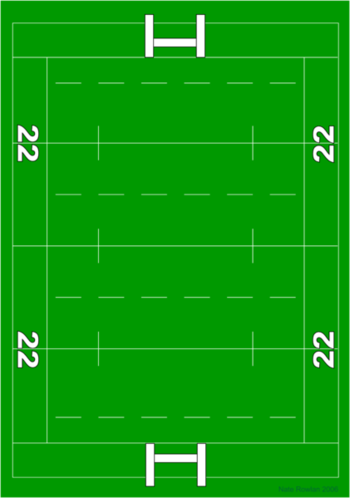
15
14
13
12
11
10
9
7
8
6
5
4
3
2
1
Notable players
British and Irish Lions
The following Munster players have also represented the British and Irish Lions:[45][46]
|
|
|
Notable Overseas Players
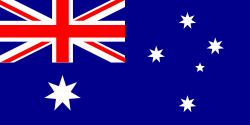 John Langford: ?
John Langford: ? Jim Williams: 2001 - 2005
Jim Williams: 2001 - 2005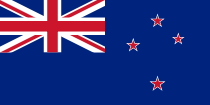 Christian Cullen: 2003 - 2007
Christian Cullen: 2003 - 2007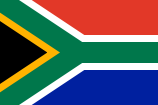 Trevor Halstead: 2005 - 2007
Trevor Halstead: 2005 - 2007
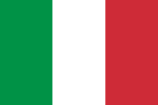 Federico Pucciariello: 2005 - 2009
Federico Pucciariello: 2005 - 2009
 Lifeimi Mafi: 2006–Present
Lifeimi Mafi: 2006–Present Paul Warwick: 2007–Present
Paul Warwick: 2007–Present Rua Tipoki: 2007 - 2009
Rua Tipoki: 2007 - 2009 Doug Howlett: 2008 - Present
Doug Howlett: 2008 - Present Jean de Villiers: 2009–2010
Jean de Villiers: 2009–2010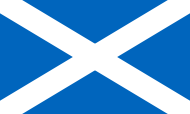 Gordon McIlwham: ?
Gordon McIlwham: ?
Other Notables
- Tommy Moroney: Munster Rugby player and Ireland soccer international
See also
- Category:Munster Rugby players
References
- ↑ Munster appoint McGahan as coach RTÉ Sport, 18 June 2008
- ↑ http://www.planetrugby.com/story/0,25883,3825_6287548,00.html
- ↑ [1] ERC European Club rankings
- ↑ 738th All Black Game - New Zealand vs Munster at Thomond Park Rugby Museum
- ↑ Alone It Stands Sunday Business Post, 12 May 2002
- ↑ Paddywhacked Sydney Morning Herald, 7 November 2003
- ↑ Munster Rugby
- ↑ Fairfax Media - All Blacks tickets are the hottest game in Irish town - 11 November 2008
- ↑ "Munster 16-18 New Zealand". BBC Sport. 18 November 2008. http://news.bbc.co.uk/sport2/hi/rugby_union/7736564.stm. Retrieved 30 April 2009.
- ↑ Brendan Gallagher (30 January 2002). "Ireland's great prop claws his way to 50". London: The Telegraph. http://www.telegraph.co.uk/sport/main.jhtml?xml=/sport/2002/01/30/srgall31.xml. Retrieved 24 May 2008.
- ↑ "Ospreys 27-18 Dragons". BBC Sport. 30 April 2009. http://news.bbc.co.uk/sport2/hi/rugby_union/welsh/8023379.stm. Retrieved 30 April 2009.
- ↑ 12.0 12.1 12.2 Simon Lewis (3 July 2003). "New Munster kit and logo to save revenue, not exploit fans". Irish Examiner. http://archives.tcm.ie/irishexaminer/2003/07/03/story931514581.asp. Retrieved 13 March 2007.
- ↑ "Details for Thomond Park, Limerick". Worldstadia.com. http://www.worldstadia.com/ws/show-page.php?menuCommand=stadium&menuData=13. Retrieved 13 March 2007.
- ↑ 14.0 14.1 "Tigers storm Thomond Park". European Rugby Cup. http://www.ercrugby.com/eng/12_6232.php. Retrieved 13 March 2007.
- ↑ "Munster aim to start work in March". Thomond Park. http://www.thomondpark.ie/extendo/webstore/thomondPark/index.jsp?page=newsItem&newsIndex=1. Retrieved 13 March 2007.
- ↑ "Thomond to keep it's name". Ireland.com. http://www.irishtimes.com/sports/rugby/2008/0221/1203471576676.html. Retrieved 15 June 2008.
- ↑ "Hunt for Cup Final tickets heats up". The Irish Post. http://www.irishabroad.com/news/irishpost/news/HuntforCupFinalticketsheatsup100506.asp. Retrieved 13 March 2007.
- ↑ Kevin McDonnell (21 May 2006). "MUNSTER FANS". Sunday Mirror. http://calbears.findarticles.com/p/articles/mi_qn4161/is_20060521/ai_n16415103. Retrieved 31 January 2007.
- ↑ "Munster Rugby USA". Munster Rugby. http://www.munsterrugby.ie/340_3239.php. Retrieved 13 March 2007.
- ↑ "Match Report: Munster v Leinster". European Rugby Cup. 2 May 2009. http://ercrugby.com/eng/12_12557.php. Retrieved 2 May 2009.
- ↑ "Battling Munster see off Perpignan". European Rugby Cup. http://ercrugby.com/eng/12_4920.php. Retrieved 13 March 2007.
- ↑ "The seventh Heineken Cup final". European Rugby Cup. http://ercrugby.com/eng/85_866.php. Retrieved 13 March 2007.
- ↑ "Biarritz Move Into Final Four". European Rugby Cup. http://ercrugby.com/eng/12_1100.php. Retrieved 13 March 2007.
- ↑ "Leinster 27-20 Munster". BBC Sport. 6 October 2006. http://news.bbc.co.uk/sport1/hi/rugby_union/my_club/leinster/5406318.stm. Retrieved 13 March 2007.
- ↑ "The final curtain". BBC Sport. 22 December 2006. http://news.bbc.co.uk/sport2/hi/rugby_union/irish/6182811.stm. Retrieved 13 March 2007.
- ↑ "Myopic Munster fans a blight on old rivalry". Irish Independent. http://www.independent.ie/sport/rugby/heineken-cup/myopic-munster-fans---a-blight-on-old-rivalry-1712773.html. Retrieved 22 April 2008.
- ↑ http://www.munsterrugby.ie/rugby/ateamfixtures.php
- ↑ http://www.irishrugby.ie/22_20928.php
- ↑ http://www.irishrugby.ie/51_172.php
- ↑ http://www.munsterrugby.ie/news/7580.php
- ↑ http://www.munsterrugby.ie/news/7590.php
- ↑ http://www.munsterrugby.ie/news/7637.php
- ↑ http://www.irishrugby.ie/22_20928.php
- ↑ http://www.munsterrugby.ie/news/7645.php
- ↑ Murphy for Munster Munster Rugby, 1 February 2010
- ↑ Eight Bedford Blues players sign on for second Championship campaign Heaven's Game, 5 May 2010
- ↑ http://www.munsterrugby.ie/news/7519.php
- ↑ Du Preez Returning to Munster Munster Rugby, 25 May 2010
- ↑ Munster agrees on Borlase deal SkySports, 10 June 2010
- ↑ http://www.planetrugby.com/story/0,25883,3551_6197238,00.html
- ↑ http://news.bbc.co.uk/sport2/hi/rugby_union/my_club/newcastle/8719493.stm
- ↑ http://www.planetrugby.com/story/0,25883,9818_6149147,00.html
- ↑ http://www.independent.ie/sport/rugby/connacht-to-steal-show-from-reds-fringe-cast-2142011.html
- ↑ http://www.munsterrugby.ie/news/7692.php
- ↑ The Ireland Rugby Miscellany (2007): Ciaran Cronin
- ↑ Munster Lions
Further reading
- English, A, (2005) Stand Up and Fight : When Munster Beats the All Blacks, Random House, London
- English, A, (2006) Munster: Our Road to Glory, Penguin Ireland, Dublin
- Murphy, E, (2006) Munster Rugby: The Secret of Their Success, Maverick House Publishers, Dublin
- Cronin, C, (2006) Beyond Our Wildest Dreams: Munster's Heineken Cup Odyssey, Tuatha Mumhan Books
External links
- Official site
- Munster Supporters Site
- European Rugby Cup
- Celtic League Site
- Irish Rugby Site
- European Rankings
- European Club Rugby Profile
|
|||||||||||||||||
|
|||||||||||||||||
|
|||||||||||||||||
|
|||||||||||